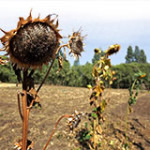Agriculture is essential to the economies of East African countries. Climate change, with its effects on temperature and precipitation, threatens this important economic activity. How to foster agricultural development and food security in East Africa as the effects of climate change become more serious is the subject of the study East African Agriculture and Climate […]
Building Smarter Subsidies: Input Subsides in Africa South of the Sahara
The flagship journal of the International Association of Agricultural Economists (IAAE), Agricultural Economics, released a Special Issue on Input Subsidy Programs (ISPs) in Sub-Saharan Africa (SSA). The main motivation for the special issue is to provide African policy makers and development partners with evidence and insight from high-quality research on the impact of Input Subsidy Programs (ISP) […]
Saving for a Sunny Day
This article was originally posted on IFPRI's Insights website. Can insurance help Ethiopian farmers survive the droughts that are likely to come? Recently, scientists uncovered the inconvenient truth that drought in eastern Africa is likely here to stay. They placed the blame squarely on climate change—namely, on the linkage between the warming Indian Ocean and […]
The Impact of the Promotion of Row Planting on Farmers’ Teff Yields in Ethiopia
ESSP Research Note 27 "The Impact of the Promotion of Row Planting on Farmers’ Teff Yields in Ethiopia " by Joachim Vandercasteelen, Mekdim Dereje, Bart Minten, Alemayehu Seyoum Taffesse . We assess the impact of the promotion of row planting at reduced seed rate on farmers’ teff yields in Ethiopia. Results indicate that the program […]
Scaling-up Adoption of Improved Technologies
ESSP Working Paper 60 "Scaling-up Adoption of Improved Technologies" by Vandercasteelen, Joachim, Dereje, Mekdim, Minten, Bart and Taffesse, Alemayehu Seyoum. Abstract: Adoption of yield-increasing technologies is seen as a key driver to increase agricultural production in Sub-Saharan Africa. There is, however, a lack of empirical evidence on the impact of programs aiming to scale-up the adoption […]
- « Previous Page
- 1
- …
- 98
- 99
- 100
- 101
- 102
- …
- 120
- Next Page »
